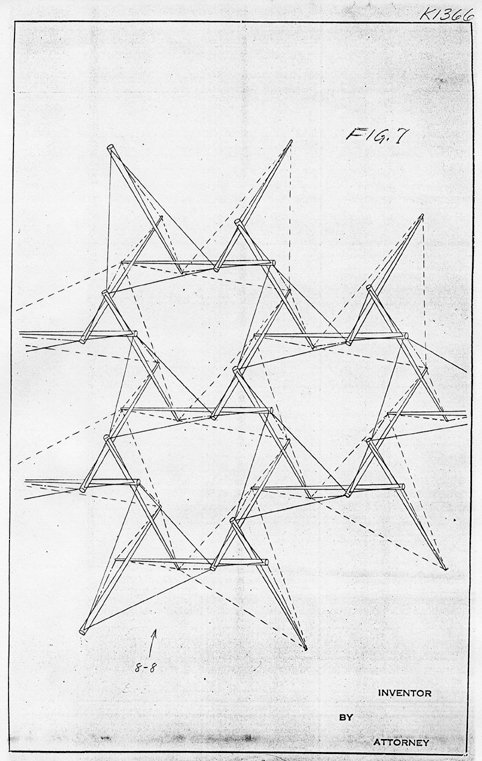
Kenneth Snelson: p. 2 from 1962 Patent Drawings (abandoned)

In updating my book to its second edition, I gradually became aware that Kenneth Snelson had experimented with trusses similar to the one I was using for my double-layer domes. I had actually seen a photograph of something that looked very similar, but I had neglected to write down the reference. He keeps his email on the net like I do, so on October 5, 2004, I wrote him asking about what I called a "truss". I also inquired about the claim I'd seen in an article by Maria Gough ("In the laboratory of constructivism: Karl Ioganson's cold structures," October, No. 84 (Spring 1998), pp. 90-117) that Ioganson had assembled a tensegrity 3-prism early in the 20th century. Ken replied quickly with a selection of patent drawings, and among them was a truss very similar to the one I had worked with (above) and a photo of a model in the same style (below top). Ken called them "planar pieces". He also enclosed a letter he'd sent to Maria Gough on the Ioganson issue.
For some time, I thought that indeed Ken's truss was identical to the one I had come up with, but on re-examination on May 28, 2007, I realized his method of connecting the interlayer tendons is different. He uses one shorter tendon where I use two longer tendons, somewhat echoing the difference between a zig-zag and a diamond topology. As is usual with these two topologies, and I think also true in this case, the diamond approach provides more rigidity.
Ken was disappointed with the structural performance of his truss. I think there were two sources for the poor performance which would not impact my design. First, there is the difference in the interlayer connections mentioned above. Second, he experimented in a planar context where I would imagine at most just one layer was attached to something rigid. In my double-layer dome designs, both layers are attached to a supporting plane which I think helps the structural performance. In double-layer sphere designs the second factor is not an issue since the structure is self sufficient.
Unaware of Ken's work, I had actually also explored his method of interlayer tendon connections. The main reason I gave it up was that it was too difficult to avoid interference problems (tendons rubbing up against struts) when his method was used. The one spherical model I constructed using his method -- see Laminar 2ν Tensegrity Octahedron (variation) -- did seem to have about the same rigidity as one I constructed using my usual method -- see Laminar 2ν Tensegrity Octahedron. In that case though I wasn't quite using my "usual" method since I omitted half the interlayer tendons.
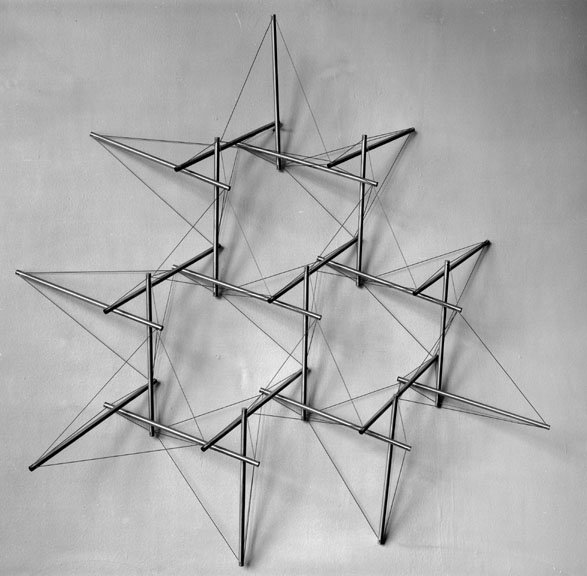
Triangle Planar Piece Model, 1961
In addition, Ken enclosed a selection of photos of the balance
of the drawings for his abandoned planar patent and some
of his planar models.
Since most are not on the net otherwise, I'll reproduce them here.
NB: He never followed through on the patent application.
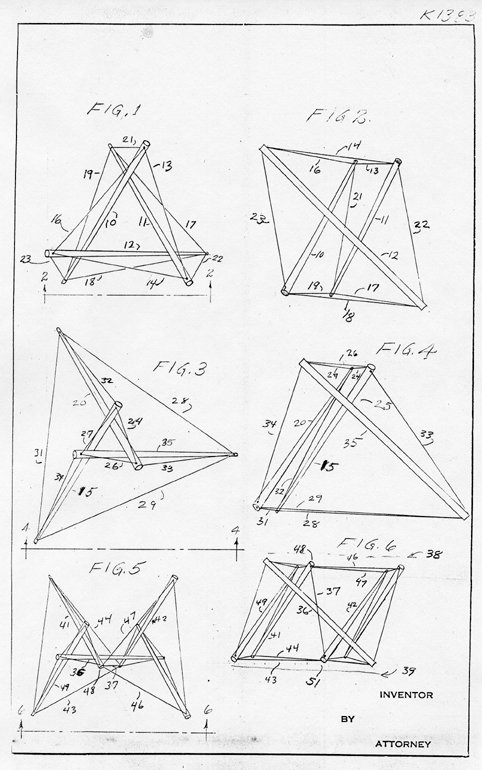
1962 Patent Drawings, p. 1
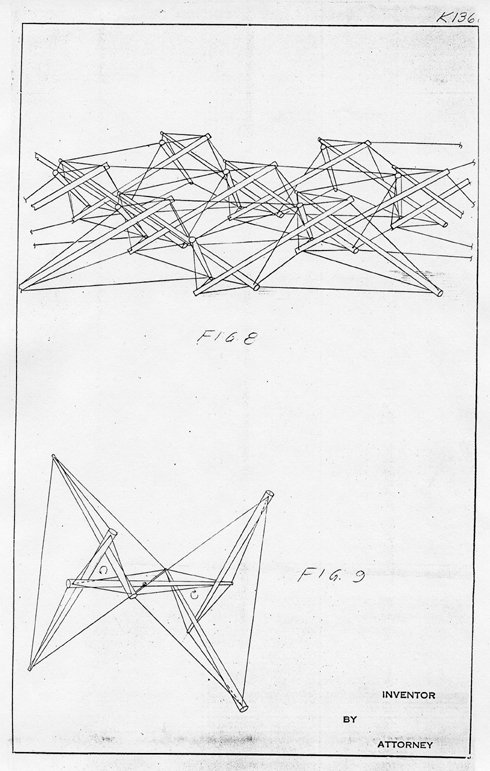
1962 Patent Drawings, p. 3

1962 Patent Drawings, p. 4
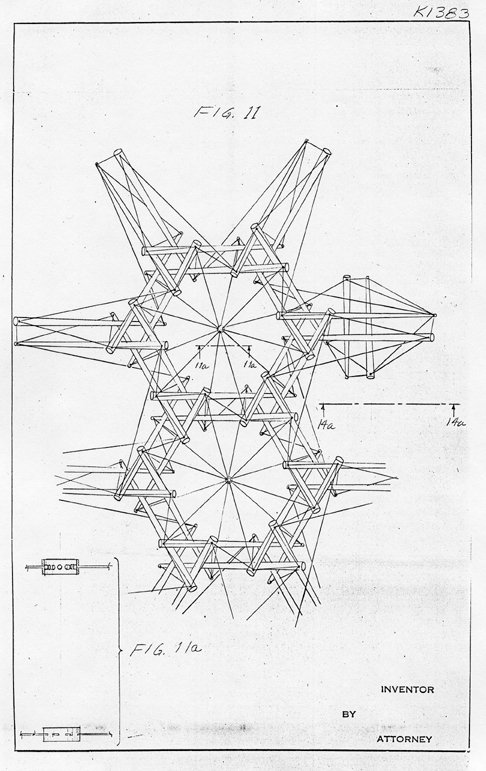
1962 Patent Drawings, p. 5
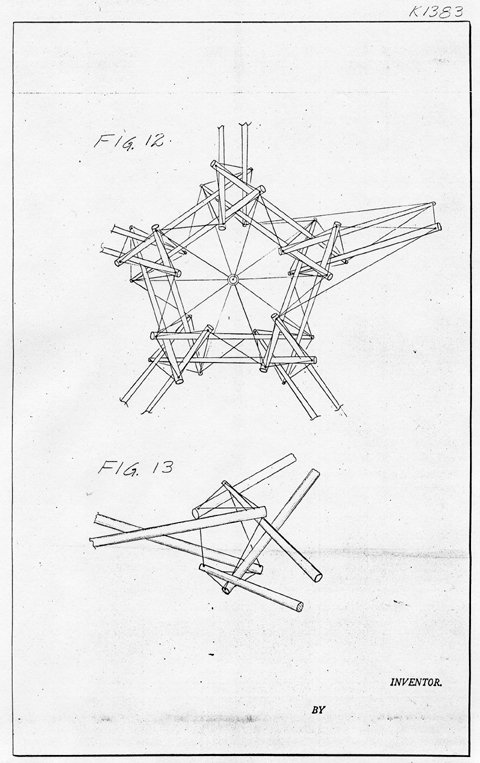
1962 Patent Drawings, p. 6
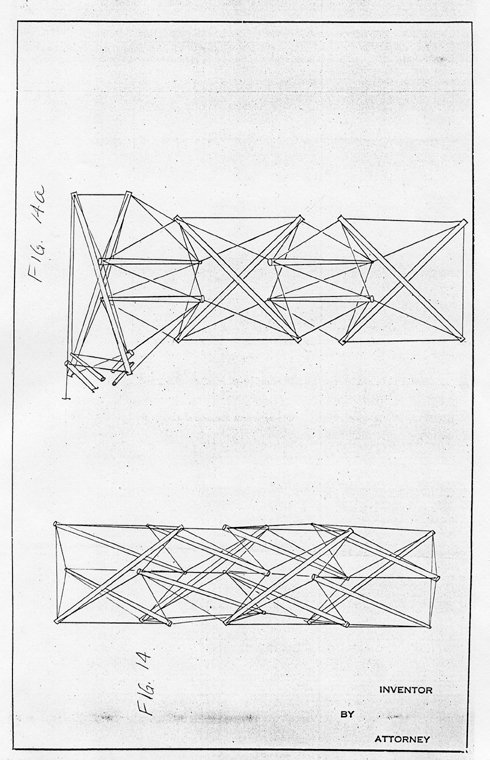
1962 Patent Drawings, p. 7
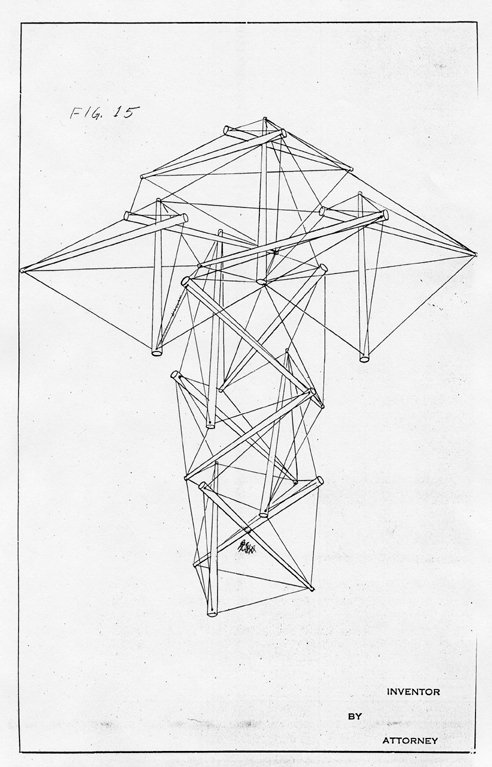
1962 Patent Drawings, p. 8
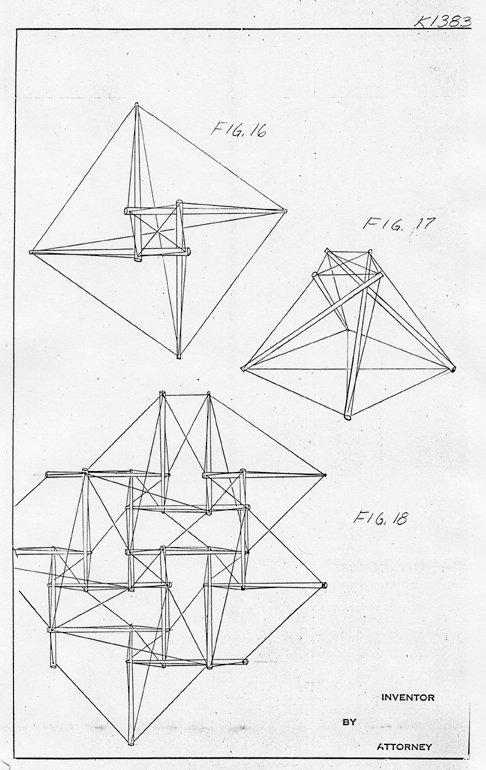
1962 Patent Drawings, p. 9
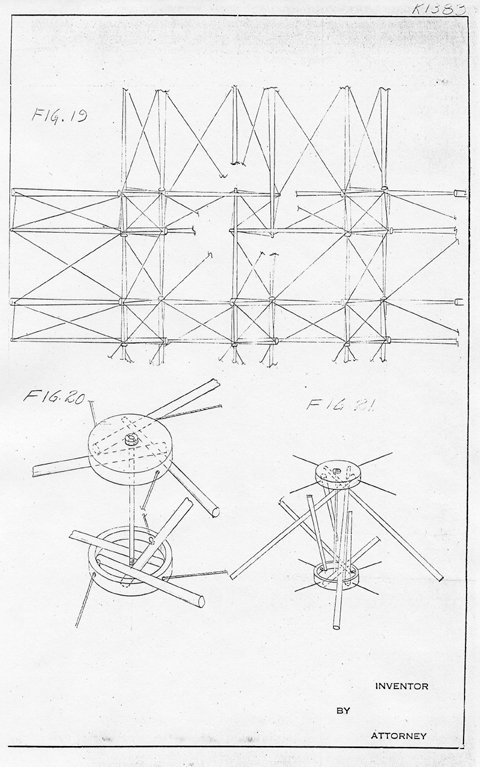
1962 Patent Drawings, p. 10

Six-Way Wood Joint, 1959

Planar Piece, York Ave. Roof, 1960
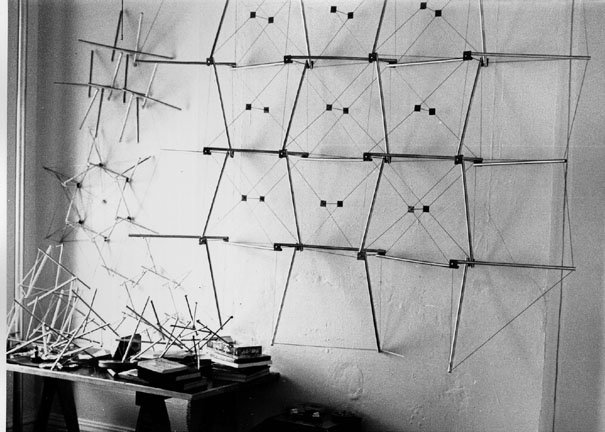
Planar Piece, York Ave. Wall, 1960
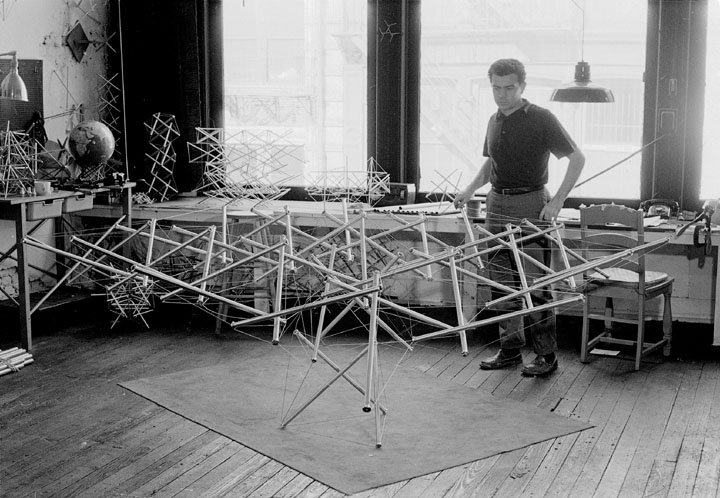
Planar Piece, Spring St., 1961
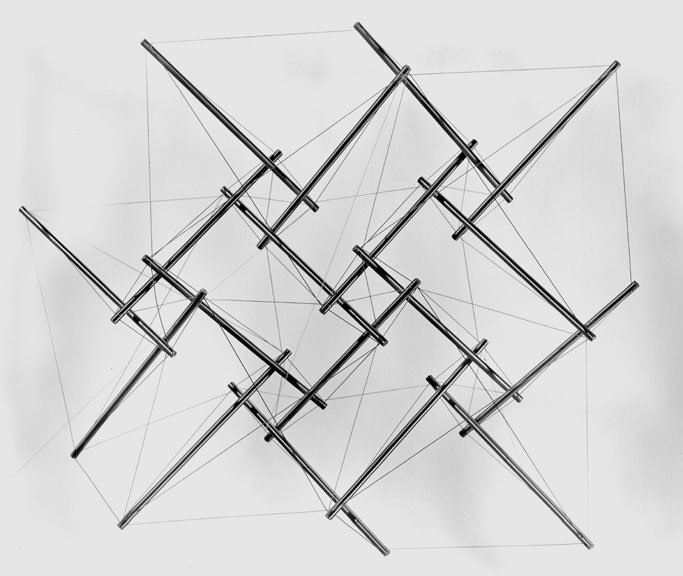
Square Planar Piece, 1961
All photos courtesy of Kenneth Snelson


